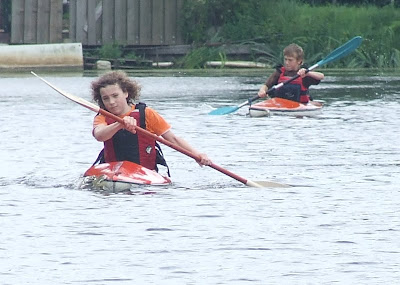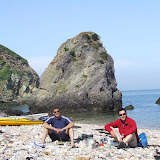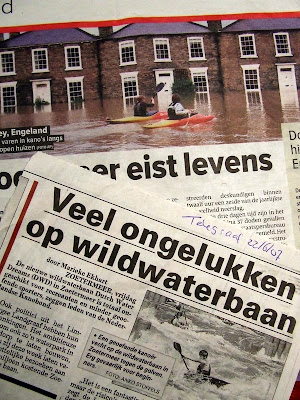
The pros and cons of VHF-radio’s and cell-phones are an everlasting subject in the German Seekajakforum and the British UKseakayakingguidebook. I have nothing new to add, just want to point to a news item in today’s Metro (one of the Dutch free Tabloids).
For the Dutch readers: click on the picture above this post for a full size and better readable view. For the non-Dutch readers: The KNRM (the Dutch Maritime Lifeguard/Rescue Organisation) is worried by the fact that more and more yacht owners go out at sea with a cell phone instead of a VHF-radio. The KNRM strongly promotes the use of a VHF-radio in emergency situations.
The ICOM IC-M71 is the successor of the ICOM M1-Euro (The radio I lost last winter ;-). The M1 was already a handy and reliable tool for seakayaking use: waterproof, compact, and a powerful Lithium-Ion battery. The IC-M71 is even more waterproof (to a higher standard) and compact (a minor difference) and has slightly higher output (6 Watt instead of 5). Biggest improvement in mine opinion though, is that squelch and volume adjustment are no longer combined around one button. That makes using the M71 with cold fingers and in a waterproof bag* far more practical: adjusting the volume of the M1 was quit difficult without (unintended) changing the position of the squelch button. (* Though the M1 and M71 are really waterproof, on salt water I use them in a Aquapack to prevent corrosion from the contact-points).









